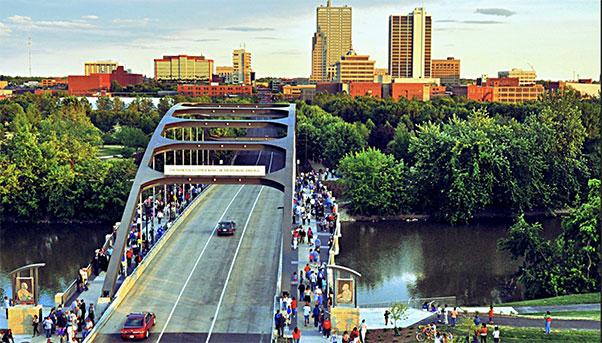
It took a decade for the day to arrive, but Fort Wayne officials were finally able to drive their shovels into the ground at a June 15 ceremony marking the start of the biggest construction and public sustainable investment project in the city’s history.
Their collective gesture, led by Mayor Tom Henry, set in motion the preparatory work for a $188-million hydraulic tunnel project
designed to reduce the amount of noxious sewage that flows into two nearby rivers during heavy rainstorms.
Not far from where Henry and the other officials broke ground, workers from S.A. Healy, a division of The Lane Construction Corporation, together with its Italian parent Salini Impregilo have begun digging two shafts that will be 240 feet (73 meters) deep. It will be at the bottom of one of these shafts where they will assemble a tunnel-boring machine (TBM) and set it in motion next summer.
Beginning at Glasgow Avenue, the TBM will grind through the bedrock under Indiana’s second largest city of 260,326 residents for almost five miles (eight kilometres) to reach Foster Park by 2020. Part of the trajectory will see the TBM go under the rivers that the project is intended to protect like the Maumee. It will also follow the path of the St. Marys south of the city centre.
Investing in sustainability by reducing sewage overflow
Called the Three Rivers Protection and Overflow Reduction Tunnel (3RPORT), it is part of the city’s plan to reduce from about 70 to four the number of times in a typical year the discharges, known as Combined Sewer Overflows (CSO), enter the Maumee and St. Marys. By reducing CSO by 90% – or more than 800 million gallons in an average year, the water quality of the rivers will improve and less pollution will float downstream and empty into Lake Erie, one of the famous Great Lakes.
«The tunnel project will have significant environmental and economic benefits for generations to come», Henry said in a statement at the time of the ground-breaking ceremony.
«It is going to keep raw sewage out of the rivers to a huge extent», David Kohli of the Utilities Advisory Group told a local television news show on the same day. «We definitely want to make them (rivers) more swimmable and more livable».
Clean Water Act
Like Washington, D.C., and other cities across the United States, Fort Wayne is acting on mandates issued under the Clean Water Act to reduce the volume of CSO flowing into rivers.
Although its combined sewer system was considered state-of-the-art when it was built in the 1890s, its method of discharging into the rivers during heavy rainfall is no longer tenable in light of growing awareness about the risk it poses to public health and the environment. The system does these discharges when the amount of rain water being collected exceeds the capacity of its pipes to carry it to the sewage treatment plant.
The 3RPORT comes after work to protect the St. Joseph River was completed.
It will include a deep rock tunnel, drop shafts, and consolidation sewers to collect and convey combined sewer overflow from eight locations along the St. Marys and Maumee rivers.
When construction is completed in 2021, a pump station associated with the tunnel operation will be located at the site where the TBM is to begin its route. Located on the western edge of a Water Pollution Control Plant, it will send excess flows to storage ponds where they will be treated.

